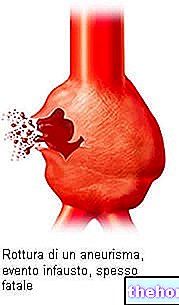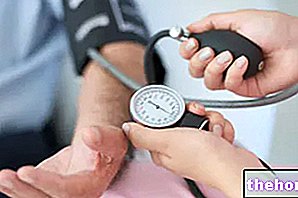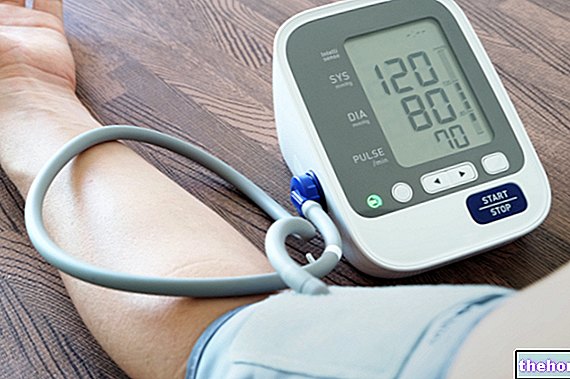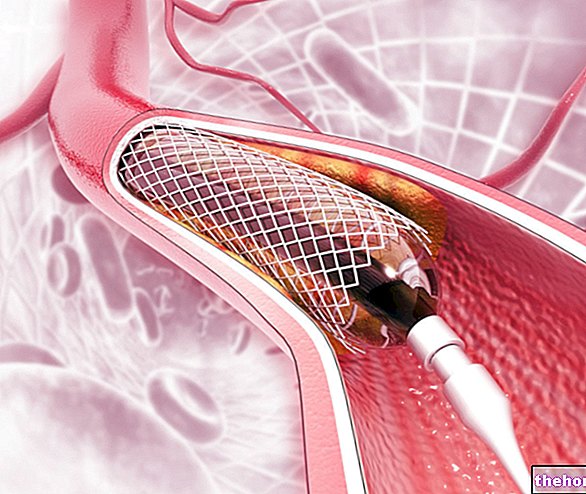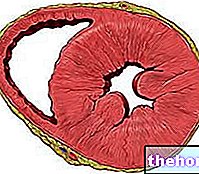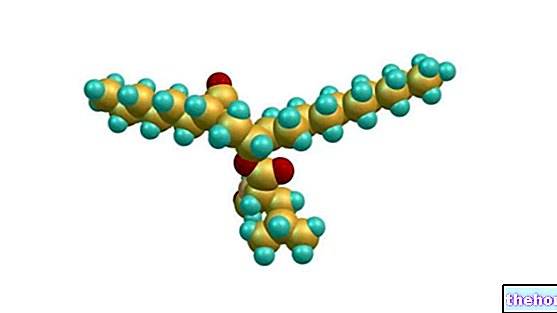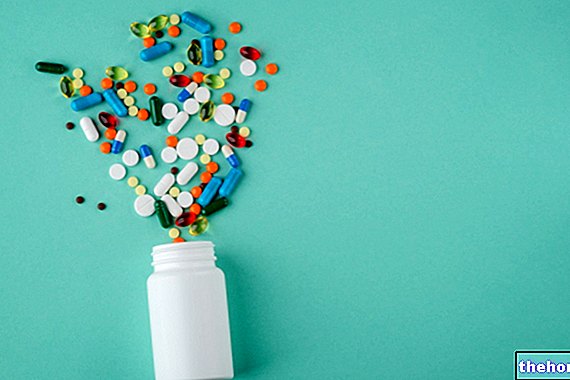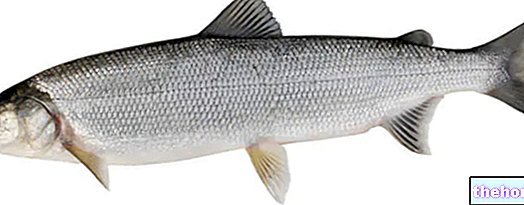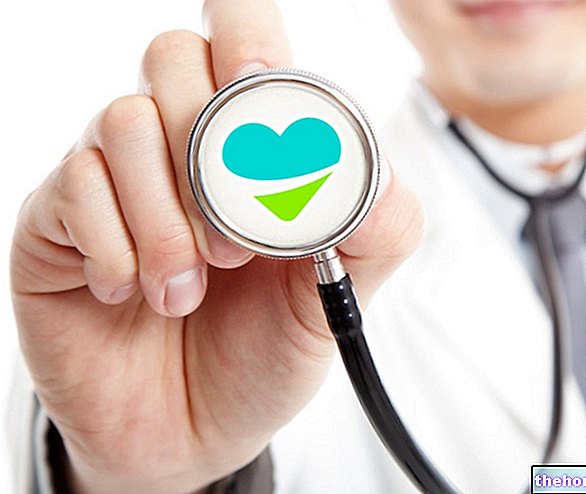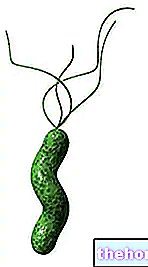Generality
The "extrasystole is a" arrhythmia of the heart characterized by pulses of cardiac contraction (systoles) having a premature onset and / or a site of origin other than the sinoatrial node
There has been a lot of discussion about the correct definition of extrasystole, which literally means "added beat", but which actually represents a premature systole; for this reason, extrasystole is sometimes referred to as premature heartbeat or ectopic beat (to emphasize the origin of the impulse other than the sinoatrial node).

Extrasystole is by far the most common cardiac arrhythmia, both in healthy individuals and in individuals with heart disease (heart disease).The causes are different and depend on the state of health of the affected individual: in a heart patient, the extrasystole is linked to the sick heart, while in a healthy person it can depend on various factors, such as alcohol and smoking abuse, coffee, fatigue physical, or mental stress. Diagnosis is mainly performed by electrocardiogram and therapy depends on the presence, or not, of a heart disease underlying the extra-systolic episode.
N.B .: to understand some concepts illustrated in the article, it is necessary to have the basics of anatomy and physiology of the heart illustrated in the general article on cardiac arrhythmias.
What is an extrasystole?
Extrasystole is an arrhythmia of the heart characterized by abnormal cardiac contraction pulses (systoles) having one or both of the following:
- Premature appearance compared to the normal stimulus. It interferes with the conduction of the impulse.
- Ectopic origin, ie the place of origin of the impulse is different from the sinoatrial node.
These two characteristics interfere with the normal sinus rhythm, which originates from the dominant marker center, or even replace it.
Extrasystoles are, by far, the most frequent arrhythmias, so much so that some cardiologists say that every individual, at least once in their life, has presented an episode of premature / ectopic systole.
Extrasystoles appear in different ways. They can be:
- Sporadic. Extrasystole is an isolated phenomenon.
- In pairs. Two successive extra-systolic phenomena occur, one after the other.
- To hi. It is the term that indicates the succession of three or more extra-systolic phenomena.
Furthermore, it may happen that one or more extrasystoles are inserted into the normal sinus rhythm with their own cadence. In other words, it is possible that a "regular alternation between extrasystole and normal heartbeat occurs. In these cases, the rhythm is defined as:
- Bigemino, if there is an alternation between a normal beat and an extrasystole.
- Trigeminal, if systolic triples made up of a normal beat and two extrasystoles occur; or by two normal beats followed by an "extrasystole.
- Quadrigeminal, if the succession of four systoles is composed of one extrasystole and three normal beats.
The extrasystoles, as mentioned, can also be distinguished by the site of origin. Therefore, on the basis of the pathway (dominant or secondary) that generates the premature systole, the following classification can be drawn up:
- Sinus extrasystoles. These are very rare events. The origin of the premature beat lies in a part of the sinus node slightly different from that which usually acts as the dominant step.
- Atrial extrasystoles. They rank second on an appearance frequency scale. The contraction impulse, premature with respect to the sinus impulse, can be generated in any point of the musculature of the atrium. The effects depend on how early the onset of extrasystole is: the earlier it is, the greater the probability that the ventricles are still in a non-excitable diastolic (ie relaxation) phase. Therefore, the ventricular myocardium does not contract, despite receiving the stimulus.
- Atrioventricular junctional extrasystoles. They are infrequent, they are in third place for frequency of appearance. The precise area of origin is near the atrioventricular node, or in the bundle of His, that is, between the atria and the ventricles. The impulse, generated between the two cardiac cavities, can propagate towards both, stimulating first the atria or first the ventricles. It follows, therefore, that the conduction of the impulse is disordered and anomalous.
- Ventricular extrasystoles. They are absolutely the more frequent premature systoles. They originate anywhere in the ventricles and can spread to the atria. After the extrasystole of the ventricles is followed by the sinus stimulus, which, however, runs into the non-excitability of the myocardium (as it has recently received a premature stimulus). Therefore there is no effective response to the normal heartbeat. This lack of muscular receptivity results in a pause, called compensatory with feeling of "loss of heartbeat."'.
It should be noted that those listed above are just some of the characteristics of the different extrasystoles. Each of them, in fact, has further details, useful for the cardiologist to define a complete diagnosis. However, we have mentioned the moment in which extrasystole appears, and how it fits into the normal heartbeat, since this moment (early or late diastole) is important to understand the effects of an extrasystole on cardiac output. Diastole is the phase in which the the heart is relaxing, after contracting to pump blood into the circulation: this is the time it takes for the myocardium to "recharge" and be receptive to a new impulse again. An "extrasystole that arises in early diastole will find the myocardium very little receptive to the stimulus; conversely, an "extrasystole that appears in late diastole will find a myocardium more susceptible to the passage of the impulse." This also affects the sinus beat following the extrasystole and cardiac output, which will therefore be compromised.
Causes
The causes that determine an "extrasystole are different and depend on the state of health of the individual affected by a premature systole.
Recalling that extrasystoles are the most frequent arrhythmic episodes, if they arise in a healthy individual, as is easily the case, they are NOT to be considered heart disease, as they lack clinical relevance for the cardiologist. NON-pathological premature systoles are:
- Tobacco.
- Abuse of coffee and tea.
- Alcohol.
- Vagal or sympathetic reflex stimulation, coming from the abdominal organs.
- States of fatigue, physical and mental.
- Anxiety and anxiolytic drugs.
- Pregnancy.
During pregnancy, extrasystoles are fairly frequent phenomena and persist until delivery; after that, they cease. Therefore, in the absence of other signs that may suggest a heart disease, they should not arouse apprehension.
The picture regarding extrasystoles associated with heart disease is quite different. In this case, the causes, ie heart diseases, are much more serious and require more attention. A simple extrasystole, in fact, can give rise to arrhythmias with more serious consequences. Self:
- The extrasystole is supraventricular, it can turn into atrial flutter or atrial fibrillation.
- The extrasystole is ventricular, it can turn into ventricular fibrillation. They are, by far, the most dangerous.
Heart diseases, linked to extra-systolic episodes, are:
- Heart failure.
- Valvulopathies.
- Ventricular hypertrophy.
- Myocardial infarction.
Finally, there are other pathological situations, not concerning the heart, which can cause extrasystoles. They are:
- Hyperthyroidism.
- Diseases of the gastrointestinal system (example: gastroesophageal reflux).
- Hypertension.
- Electrolyte imbalances (hypokalaemia; hypercalcemia; hypomagnesaemia).
Symptoms
Most extrasystoles are not felt by the affected subject. This is due to the fact that they are minor manifestations. The sensation is of a missing heartbeat or a more intense heartbeat.
When the extrasystoles occur in blanks (ie at least three successive premature systoles), heartbeat disturbances are more easily noticeable.
The other typical symptoms are:
- Disturbing sensation in the chest, similar to the fluttering of wings.
- Heartbeat (or palpitation).
- Anxiety.
- Dizziness.
- Nausea.
- Pallor.
- Lipothymia (weakness).
Diagnosis
An accurate diagnosis requires a cardiological visit. Traditional tests, valid for the evaluation of any arrhythmic / extra-systolic episode, are:
- Pulse measurement.
- Stethoscopy.
- Electrocardiogram (ECG).
- Dynamic electrocardiogram according to Holter.
Pulse measurement. The cardiologist can draw fundamental information from the evaluation of:
- Arterial pulse. The measurement is carried out on the radial artery (at the level of the wrist). It informs about the frequency and regularity of the heart rhythm.
- Jugular venous pulse. It is useful to understand the type of extrasystole present.
Stethoscopy. Listening to noises and murmurs is very useful, for example, to distinguish aortic, or pulmonary, valve stenosis from atrioventricular valve stenosis.
Electrocardiogram (ECG). It is the instrumental examination indicated to evaluate the trend of the electrical activity of the heart. On the basis of the resulting traces, the doctor can estimate the severity and causes of the extrasystoles.
Dynamic electrocardiogram according to Holter. It is a normal ECG, with the advantageous difference that the monitoring lasts for 24-48 hours, without preventing the patient from carrying out normal activities of daily life. It is useful when extra-systolic episodes are sporadic and unpredictable.
The anamnesis, that is the collection of information by the doctor, of what the patient describes about the extra-systolic attacks, also plays an important role in the diagnosis. The anamnesis is necessary because, as we have said, extrasystoles arise frequently and with episodes that are days / weeks apart from each other, even in those who do not have pathological disorders of any other nature. These individuals, unless the ESA is in progress, show a normal ECG trace, making a correct diagnosis impossible.
Therapy
Episodes of extrasystole, in people without heart disease, do not require specific therapeutic interventions. This is true even if the events are frequent. However, it is recommended:
- Moderate the consumption of caffeine or alcohol.
- Not smoking.
- Reduce stress and anxiety without resorting to drugs.
In other words, by correcting some behaviors and safeguarding one's health more, it is possible to stem the problem linked to premature systole.
The behavior to adopt towards cardiac extrasystoles is different. In these cases, the therapeutic treatment can be of a pharmacological, electrical or surgical type.
The drugs used are:
- Antiarrhythmics. They serve to normalize the heart rhythm. For instance:
- Quinidine
- Procainamide
- Beta blockers. They are used to slow down the heart rate. For instance:
- Metoprolol
- Timolol
- Calcium channel blockers. They are used to slow down the heart rate. For instance:
- Diltiazem
- Verapamil
It must be pointed out that the extrasystole of pathological origin is a symptom. Therefore, the simple administration of antiarrhythmic drugs is not sufficient to solve the problem.
If heart disease is the source of the problem, the electrical treatment usually consists of so-called catheter radiofrequency ablation.

Surgical treatment, on the other hand, is aimed at solving the underlying heart problem and therefore depends on the diagnosed heart disease. For example, if the patient suffers from aortic stenosis, surgery aimed at repairing the heart's valve function also restores the normal rhythmicity of the heart.
Finally, as we have seen, some extrasystoles are caused by non-cardiac pathological states. Also in these cases, the disappearance of premature systoles is subsequent to the treatment of the diagnosed underlying pathology. This is the case, for example, of electrolyte imbalances, for which the therapy consists in the administration of magnesium supplements (if the patient suffers from hypomagnesaemia) or potassium (if the patient suffers from hypokalaemia). We proceed in the same way in the presence of hyperthyroidism, treating the latter first, as it causes extrasystoles.
Prevention
Based on what has been said, to prevent episodes of extrasystole, it is necessary to eliminate those risk factors that can contribute to developing heart disease. Avoiding smoking, for example, in addition to preventing immediate extrasystolic phenomena, also removes the risk of developing heart disease in the future. Equally important is physical activity, the performance of which (provided that it is seen as a recreation and not as a an obligation) has positive effects on the states of anxiety and stress that can afflict an individual. It has in fact been observed that physical exercise reduces extrasystoles in many subjects.

